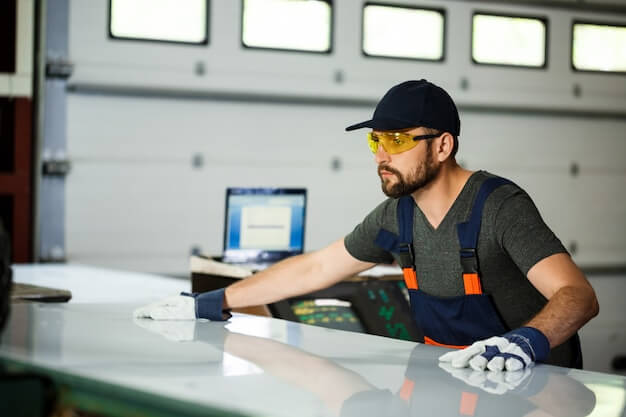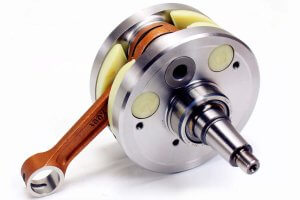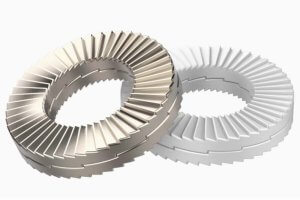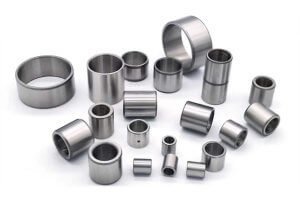Introduction to Machining Composites
The process of machining composites, a field that utilizes a variety of substances with different properties skillfully merged to create a new material possessing unique characteristics. It encapsulates the application of various operations such as cutting, drilling, and grinding on composites to obtain desired shapes or finishes. Engineered composite materials stand significant in today’s technological landscape due to their customizable features – they can be tailor-made to exhibit specific desirable physical attributes, suiting a range of applications within the engineering sphere.
- In the aviation industry, for instance, lightweight and robust composite materials have been crucial in improving fuel efficiency while ensuring airframe strength.
- In automotive manufacturing, composites are valued for not just their resilience but also their flexibility, enabling more complex design creations without compromising safety.
Fundamentally, the diverse use-cases across industries prove how intrinsic machining composites has become to modern-day engineering practices.
Understanding the Basics of Composite Materials
Composite materials, at their most basic level, are made from two or more distinct elements combined to create a new material with properties different from its constituents. The dual natures give the composite unique thermal, chemical, mechanical, and physical characteristics tending to deliver superior performance than single-element materials.
Fundamentally, there are various types of composites that an engineer can select depending upon specific structural requirements. A thermosetting composite is one such type which consists of a thermoset resin system and reinforcing fiber while maintaining high strength-to-weight ratio. An example here could be epoxy resin reinforced with carbon fiber used in aerospace applications due to its excellent fatigue resistance.
Another predominant type is Metal Matrix Composites (MMCs). Typically, these consist of a metal- such as aluminium mixed with another metallic or ceramic material like silicon carbide particles or carbon fibers. MMCs exhibit a blend of strong attributes like light weight found in metals and stiffness & strength associated with ceramics, making them ideal for automotive and electronics industries.
Challenges Encountered in Machining Composites
Machining composites present numerous challenges, primarily due to their inherent material properties such as hardness and abrasiveness. One key challenge when machining composite materials is tool wear. Unlike traditional metals, composite materials usually consist of strong fibers embedded within a softer matrix which could lead to uneven tool wearing. For example, the abrasive nature of carbon fiber composites accelerates tool wear significantly more than usual wear experienced with metal alloys.
The impact these challenges have on the final product can be substantial. Tool wear can result in poor surface finish on the machined part if not managed properly, thus affecting overall quality. Moreover, it necessitates frequent tool replacements – driving up production costs. Lastly, inconsistent tool wear can also cause dimensional inaccuracies in the final component, potentially leading to failures in precision-critical applications.
- Tool Wear: This refers to the gradual loss or deformation of a cutting tool due to continuous contact with the workpiece during machining. Tool wear in composite machining is typically faster due to high abrasiveness of the reinforcing fibers, particularly for carbon and glass fiber composites.
- Poor Surface Finish: Resulting from rapid tool wear, this may require secondary finishing processes to meet desired standards – adding extra cost and time to the manufacturing process.
- Dimensional Inaccuracy: Another consequence of accelerated tool wear can manifest in undesirable dimensions of the finished components, making them unfit for their intended application.
Material Selection for Machining Composites
When it comes to machining composites, careful material selection is crucial to ensure successful and efficient machining processes. Here are some key factors to consider:
1. Mechanical Properties
Understanding the mechanical properties of the composite material is essential for material selection. Factors such as tensile strength, flexural strength, and impact resistance should be evaluated to ensure the chosen material can withstand the machining forces and maintain structural integrity.
2. Fiber Type and Orientation
The type and orientation of the fibers in the composite play a significant role in machining. Different fiber types, such as carbon fiber or fiberglass, have varying properties and require specific machining techniques. Additionally, the orientation of the fibers affects the material’s anisotropic behavior, which should be considered during machining.
3. Matrix Material
The matrix material in composites, such as epoxy or polyester resin, also influences machining. The matrix can have different hardness, thermal properties, and machinability, which should be compatible with the chosen machining processes and tools.
4. Machining Environment
The machining environment, including factors like temperature, humidity, and potential contaminants, can significantly impact the machining process and the quality of the finished product. Different composite materials respond uniquely to different conditions, and considering the machining environment can help improve productivity, reduce costs, and ensure the quality of the finished product.
By carefully considering the mechanical properties, fiber type and orientation, matrix material, and machining environment, manufacturers can select the most suitable composite material for their machining processes. To learn more about machining composites and other valuable engineering insights, you can explore the Knowledge Base provided by our trusted partner.
Overcoming Challenges in Machining Composites: Tips and Strategies
In order to efficiently machine composites, engineers can employ a variety of strategies. First and foremost is understanding the material’s composition and behaviour under machining forces. For instance, some types of composites can delaminate when drilled or milled using conventional tools, hence, specialty tooling designed for composite materials should be considered. Utilizing correct cutting parameters such as spindle speed, feed rate, and depth of cut are also key aspects that can aid in managing the heat generated during machining operation thus preventing damage to the workpiece.
- Anecdote 1: In a certain aerospace company, engineers experienced difficulties with carbon fiber reinforced polymers (CFRP) which tended to fray or splinter during machining. After implementing specially tailored drills designed for CFRP along with adjusted cutting parameters, they observed an improvement in part finish, thereby alleviating several production delays.
- Anecdote 2: In another example from the automotive industry, engineers were faced with challenges while machining glass fiber-filled plastics for engine components. Switching their strategy to include diamond-coated end mills and optimizing coolant application significantly improved tool life and minimized harmful dust emissions.
State-of-the-Art Techniques Used in Machining Composites
In the ever-evolving field of engineering, various modern techniques have come to forefront for machining composites. Among these, laser machining and waterjet cutting are particularly noteworthy because they effectively tackle many challenges previously faced by engineers while handling composite materials.
Laser machining is a non-contact process that utilizes a high-intensity light beam to cut, engrave or mark a composite material. It offers advantages such as increased precision, repeatability, reduced thermal impact, and decreased risk of mechanical deformation. The technique significantly reduces the wear and tear typically associated with traditional machining, ensuring an extended lifespan for tools.
Similarly, waterjet cutting uses an ultra-high-pressure stream of water mixed with abrasives to make precise cuts on tough composite materials. This technology boasts numerous benefits including accuracy, flexibility, and no heat-affected zone (HAZ), which results in minimized distortions or changes in the material properties.
- The aforementioned techniques like laser machining offer increased precision and reduced thermal impact.
- Waterjet cutting minimizes distortions or changes in the material properties due to absence of any heat-affected zones.
Both of these state-of-the-art processes exhibit great efficacy in addressing the inherent difficulties posed by composite materials, thereby transforming the landscape of industrial manufacturing and design.
Other Articles You Might Enjoy
- From Concept to Reality: Material Prototyping Challenges in CNC Machining
Introduction to CNC Machining and Material Prototyping CNC (Computer Numerical Control) machining stands as a cornerstone in modern manufacturing, enabling the precise and automated creation of parts from various materials.…
- CNC Machining Tolerances and Material Selection: Precision Engineering Insights
Introduction to CNC Machining, Tolerances and Material Selection CNC machining is a prevalent manufacturing process that entails the use of pre-programmed computer software to dictate the movement of factory machinery…
- Improving CNC Machining Accuracy with Material Selection: Thermal Expansion Considerations
Introduction to CNC Machining and Its Correlation with Material Selection In the realm of advanced manufacturing, Computer Numerical Control (CNC) machining stands as a pivotal technique. Simplifying what would otherwise…










 Afrikaans
Afrikaans Albanian
Albanian Amharic
Amharic Arabic
Arabic Armenian
Armenian Azerbaijani
Azerbaijani Basque
Basque Belarusian
Belarusian Bengali
Bengali Bosnian
Bosnian Bulgarian
Bulgarian Catalan
Catalan Cebuano
Cebuano Chichewa
Chichewa Chinese (Simplified)
Chinese (Simplified) Chinese (Traditional)
Chinese (Traditional) Corsican
Corsican Croatian
Croatian Czech
Czech Danish
Danish Dutch
Dutch English
English Esperanto
Esperanto Estonian
Estonian Filipino
Filipino Finnish
Finnish French
French Frisian
Frisian Galician
Galician Georgian
Georgian German
German Greek
Greek Gujarati
Gujarati Haitian Creole
Haitian Creole Hausa
Hausa Hawaiian
Hawaiian Hebrew
Hebrew Hindi
Hindi Hmong
Hmong Hungarian
Hungarian Icelandic
Icelandic Igbo
Igbo Indonesian
Indonesian Irish
Irish Italian
Italian Japanese
Japanese Javanese
Javanese Kannada
Kannada Kazakh
Kazakh Khmer
Khmer Korean
Korean Kurdish (Kurmanji)
Kurdish (Kurmanji) Kyrgyz
Kyrgyz Lao
Lao Latin
Latin Latvian
Latvian Lithuanian
Lithuanian Luxembourgish
Luxembourgish Macedonian
Macedonian Malagasy
Malagasy Malay
Malay Malayalam
Malayalam Maltese
Maltese Maori
Maori Marathi
Marathi Mongolian
Mongolian Myanmar (Burmese)
Myanmar (Burmese) Nepali
Nepali Norwegian
Norwegian Pashto
Pashto Persian
Persian Polish
Polish Portuguese
Portuguese Punjabi
Punjabi Romanian
Romanian Russian
Russian Samoan
Samoan Scottish Gaelic
Scottish Gaelic Serbian
Serbian Sesotho
Sesotho Shona
Shona Sindhi
Sindhi Sinhala
Sinhala Slovak
Slovak Slovenian
Slovenian Somali
Somali Spanish
Spanish Sundanese
Sundanese Swahili
Swahili Swedish
Swedish Tajik
Tajik Tamil
Tamil Telugu
Telugu Thai
Thai Turkish
Turkish Ukrainian
Ukrainian Urdu
Urdu Uzbek
Uzbek Vietnamese
Vietnamese Welsh
Welsh Xhosa
Xhosa Yiddish
Yiddish Yoruba
Yoruba Zulu
Zulu